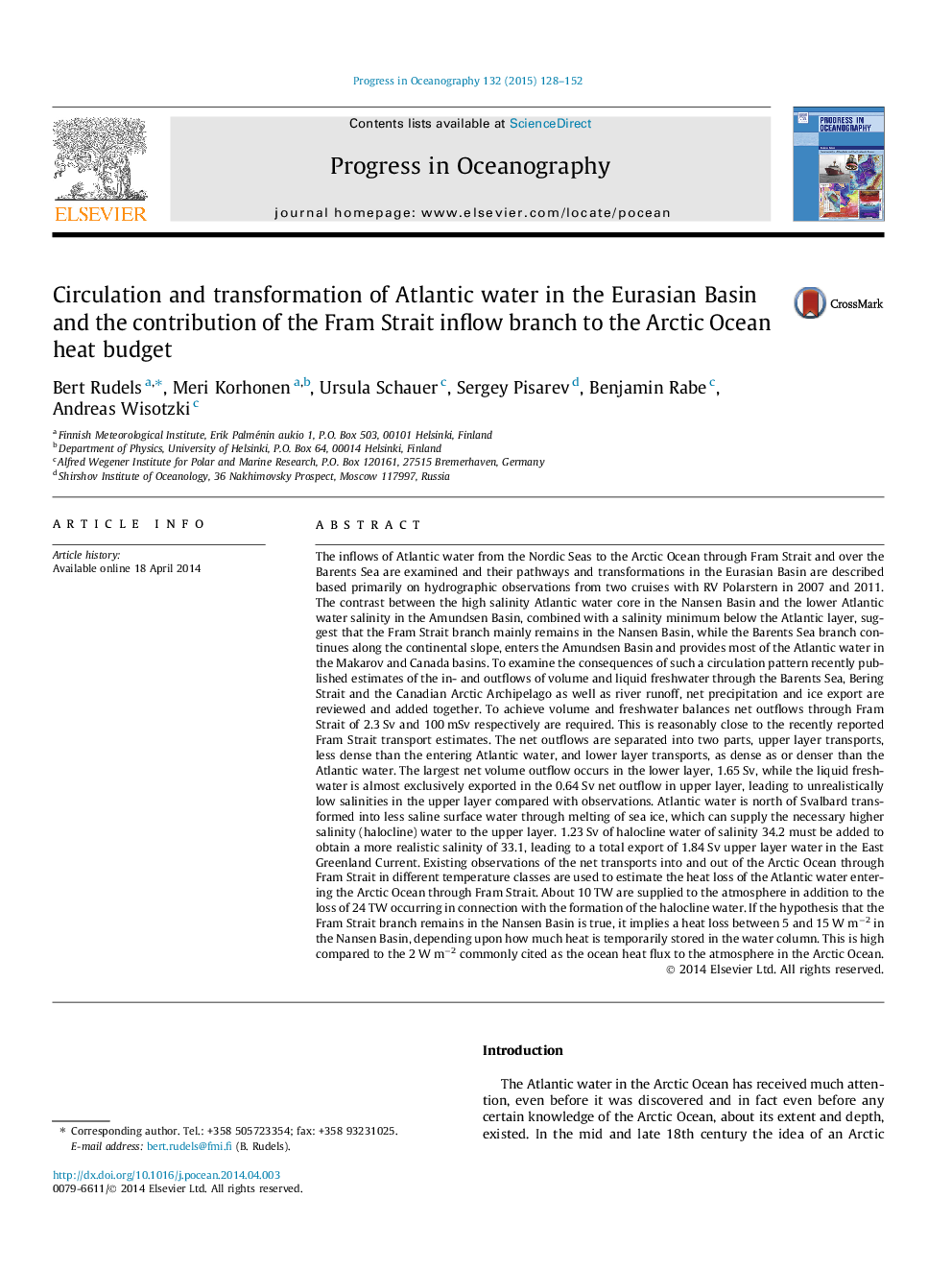| Article ID | Journal | Published Year | Pages | File Type |
|---|---|---|---|---|
| 4553009 | Progress in Oceanography | 2015 | 25 Pages |
•Circulation and cooling of the Fram Strait branch in the Nansen Basin.•Characteristics of the water entering the Arctic Ocean over the Barents Sea.•Interactions between the Fram Strait branch and the Barents Sea branch in the Eurasian Basin.•Volume and freshwater balances of the Arctic Ocean.
The inflows of Atlantic water from the Nordic Seas to the Arctic Ocean through Fram Strait and over the Barents Sea are examined and their pathways and transformations in the Eurasian Basin are described based primarily on hydrographic observations from two cruises with RV Polarstern in 2007 and 2011. The contrast between the high salinity Atlantic water core in the Nansen Basin and the lower Atlantic water salinity in the Amundsen Basin, combined with a salinity minimum below the Atlantic layer, suggest that the Fram Strait branch mainly remains in the Nansen Basin, while the Barents Sea branch continues along the continental slope, enters the Amundsen Basin and provides most of the Atlantic water in the Makarov and Canada basins. To examine the consequences of such a circulation pattern recently published estimates of the in- and outflows of volume and liquid freshwater through the Barents Sea, Bering Strait and the Canadian Arctic Archipelago as well as river runoff, net precipitation and ice export are reviewed and added together. To achieve volume and freshwater balances net outflows through Fram Strait of 2.3 Sv and 100 mSv respectively are required. This is reasonably close to the recently reported Fram Strait transport estimates. The net outflows are separated into two parts, upper layer transports, less dense than the entering Atlantic water, and lower layer transports, as dense as or denser than the Atlantic water. The largest net volume outflow occurs in the lower layer, 1.65 Sv, while the liquid freshwater is almost exclusively exported in the 0.64 Sv net outflow in upper layer, leading to unrealistically low salinities in the upper layer compared with observations. Atlantic water is north of Svalbard transformed into less saline surface water through melting of sea ice, which can supply the necessary higher salinity (halocline) water to the upper layer. 1.23 Sv of halocline water of salinity 34.2 must be added to obtain a more realistic salinity of 33.1, leading to a total export of 1.84 Sv upper layer water in the East Greenland Current. Existing observations of the net transports into and out of the Arctic Ocean through Fram Strait in different temperature classes are used to estimate the heat loss of the Atlantic water entering the Arctic Ocean through Fram Strait. About 10 TW are supplied to the atmosphere in addition to the loss of 24 TW occurring in connection with the formation of the halocline water. If the hypothesis that the Fram Strait branch remains in the Nansen Basin is true, it implies a heat loss between 5 and 15 W m−2 in the Nansen Basin, depending upon how much heat is temporarily stored in the water column. This is high compared to the 2 W m−2 commonly cited as the ocean heat flux to the atmosphere in the Arctic Ocean.
